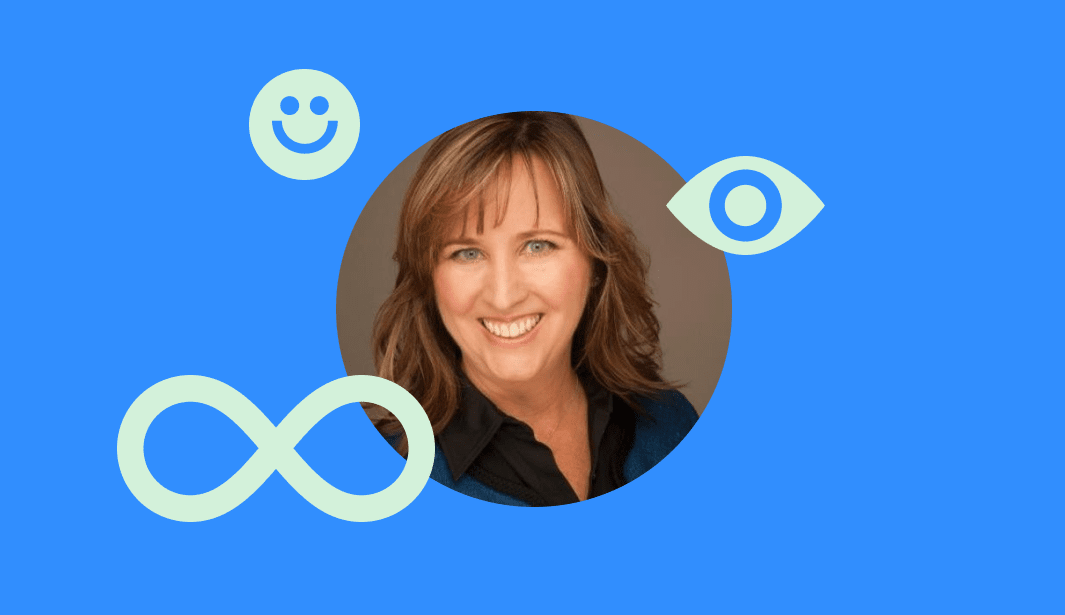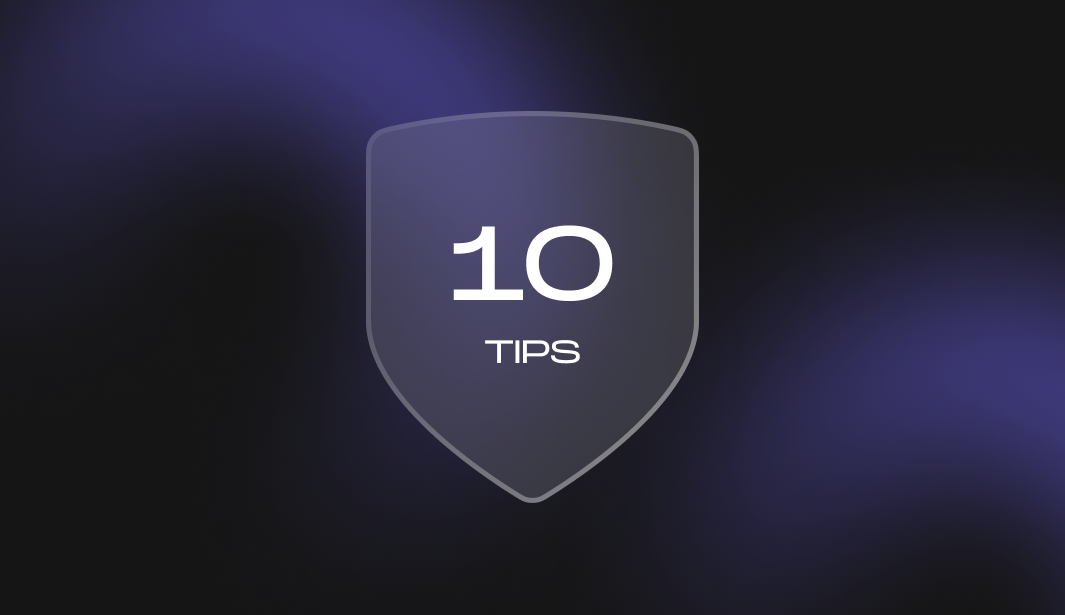We at Stripo do our best to force new technologies and standards in email marketing, so we are happy to discuss this with those at the forefront of the industry.
How the approach to email marketing has changed over the past 20 years, what implementation AI brings to the industry, why interactivity in email can be dangerous, and whether personalization in emails always works, we talked with Jeanne Jennings, Founder and CEO of Email Optimization Shop.

Jeanne Jennings is a recognized expert in email marketing and a sought-after consultant, speaker, trainer, and author specializing in email marketing strategy, tactics, creative direction, and optimization. She helps organizations make their email marketing programs more effective and profitable.
How to combine different roles when working in the field of email marketing
Stripo: With your wide range of roles, including General Manager at Only Influencers, Founder and CEO of Email Optimization Shop, and Programming Chair of the Email Innovations Summit, you have quite a diverse set of responsibilities. How do you manage these multiple roles and the challenges you face?
Jeanne: It seems like a lot, but they are all intertwined, like three pieces of the same puzzle.
My primary role is as a strategy consultant with Email Optimization Shop; I help organizations make their email marketing more effective and profitable. I've been doing that for more than 20 years, and I've had the pleasure of working with some great brands, including AARP and Hasbro, Capital One, Dartmouth College Fund, The New York Times, United Parcel Service (UPS), and Verizon (B2B and B2C).
I was a member of Only Influencers, the original email industry professional community, long before becoming the general manager. It's always been amazing how people in this industry share information on what's working, what's not, and how to do better email marketing. Only Influencers epitomize that. It's a group of people who love email marketing and sharing their knowledge. I've learned so much from the community; I hope others can say they've learned from me.
The Email Innovations Summit is an email industry conference produced by Only Influencers, with our parent company Rising Media, each summer. Handling the programming allows me to leverage my industry contacts differently to give industry thought-leaders and lesser-known email marketers a platform to share their knowledge and expertise.
All are a labor of love for me. I love what I do, and I love this industry. The only challenge is the limited number of hours in a day!
S: With what request do clients come to you in Email Optimization consulting? What do they want to achieve? What worries them the most?
J: Most of my clients have successful, profitable email marketing programs — they’re looking to make them better, even more successful, and even more profitable. We usually begin with an audit, looking at everything they are doing and then identifying the following:
- what’s working, and how they can do more of it;
- what’s not working, and how we can either fix it or sunset it;
- what they’re not doing that they should be.
Once we do that analysis, which involves looking at the quantitative and qualitative data, the roadmap to improvement is clear. I love doing that initial analysis but staying on to help implement even more. Overseeing the creative and other development allows a knowledge transfer of best practices with the client's team; it's also fun to do the reporting and see how much the changes have boosted performance.
Once we begin implementing, we do A/B or multivariate testing, which allows us to confirm that we are improving performance and quantify that improvement. I'm a bit competitive, so performance testing is always fun.
My clients aren't usually too worried about anything — maybe just that their competitors will optimize faster or better than they do.
How email marketing has changed in more than 20 years
S: In reflecting on your extensive experience, could you highlight the top 5 core differences between email marketing when you first started and email marketing today? How have these changes impacted the way businesses engage with their audiences?
J: I started in digital marketing pretty early — my first email-only job was in 2000, so that's going back a bit. Core differences:
- There's a roadmap for email marketing success now, which we didn't have back in 2000. We were all just trying things, testing, publishing, and speaking on what worked and what didn't. We all iterated on each other. It's very sad to see marketers in 2023 not leveraging that body of knowledge we created. Most of it is still relevant today.
- We now have standardized metrics for email marketing, which we didn't have back in 2000. Sounds crazy, right? But we didn't — for instance, click-through rate. Back then, some platforms used total instead of unique clicks in the numerator; there was a debate about whether or not to suppress bounces from the denominator — and some people used opens in the denominator, which is what we call the click-to-open rate metric today. It makes a difference; back then, it was sometimes difficult to get an apples-to-apples comparison.
- We have better attribution for revenue and conversions. Integration between the email marketing platforms and the systems that handle revenue and conversions is much better today — it was almost non-existent back then. It allows us to see how an email or a campaign performs and impacts the bottom line. But again, I still see companies that don't have this set up and are trying to run without it. Very sad.
- Email marketing gets more respect now than it did back then. Back then, if you did email marketing, everyone assumed you were spamming people. Then we went through a few cycles of “email is dead.” But email is still here, going strong, and the top channel for return on investment. When the economy falters, companies invest in email marketing because they know it will generate a good return.
- Automation is the future of email marketing — which we didn't have back when I started. Rather than the one-off emails and campaigns we were doing in the 2000 period, companies are now automating their emails based on their prospects' and customers' journeys. This is much better for recipients because many emails are triggered by their actions, making them highly relevant (think cart abandonment emails in eCommerce). It's also better for email marketers, as it shifts their focus; instead of being on a “get the emails out” hamster wheel, they have time to be more strategic about what and when they send.
Email marketing trends: benefits and dangers
S: As Chair of the annual Email Innovations Summit, you're likely at the forefront of upcoming trends and strategies in email marketing. Please share some of the most innovative practices or strategies you've observed that will likely shape the future of email marketing.
J: I remember a few years ago when we had our first session on brand indicators for message identification (BIMI) at the show. I was blown away. It's taken a while, and it's still not the standard, but the fact that BIMI provides marketing more impact in the inbox while helping with deliverability is huge. This year at the Email Innovations Summit, Ryan Hofmann, with Forever 21, will walk us through his experience implementing BIMI.
This year's show features Artificial Intelligence (AI) in a keynote by Matthew Dunn, with Campaign Genius, and in an interactive discussion session that Elizabeth Jacobi, with Mochabear Marketing, will lead. That will have an impact, although it remains to be seen how quickly and in what ways it will be adopted.
It's not a practice or a strategy. It's more an external threat to the industry — it's privacy and security regulations. Reed Freeman, with ArentFox Schiff, will present a keynote on this topic.
Email marketers need to be proactive about addressing security and privacy issues concerning email addresses and other data they have on their prospects and clients before legislation forces them to.
S: On your LinkedIn page, you recently shared many interesting thoughts from experts on implementing AI in email marketing. What potential challenges arise when integrating AI into email marketing, and how can marketers prepare for an AI-driven future in this field?
J: AI is the latest bright shiny object to catch the eye of the email marketing industry. AI is a helpful tool for email marketers. The key to success is knowing how best to use it for your program.
For those with little experience in email marketing who need help with how to craft effective email messages, AI will be a huge help. For most email marketers, it’s not that AI will create the email for them. It's that it will save them time. For instance, I’ve been using AI a lot for initial research, things like the top 10 benefits of professional development for educators (my client runs an annual conference for university faculty). Could I have put this list together myself? Yes. But it was faster to have AI do it for me.
Early on, there was an “AI can do it better” mentality. I think that’s dissipating. In a recent poll that Only Influencers did, only 12% agreed that AI always improves email marketing.
This change is partly due to articles, like one that Elizabeth Jacobi, with MochaBear Marketing, wrote for the Only Influencers Metrics Project blog, showcasing performance tests pitting AI-generated content against human-generated content.
The best thing email marketers can do is to begin playing with AI, seeing how it can help them.
S: In your opinion, is it crucial to use interactive elements in email newsletters — AMP, gamification, countdown timers, and others? Are there industries where they cannot be dispensed with and where they are contraindicated?
J: Interactivity in email is very exciting, no question. AMP allows for purchases to be made inside the email — no more landing pages! Countdown timers are great to add urgency. Gamification can drive action.
But there are a few issues. AMP and countdown timers aren't a 100% solution — they don't work in every instance. Apple MPP negatively impacts countdown timers, and there are a lot of security concerns around AMP, as Matthew Dunn, with Campaign Genius, described in a blog post he wrote for Only Influencers.
The biggest concern I have around interactivity is the bright shiny object issue. Email marketers can get so excited about these things that they need to remember core best practices, which aren't nearly as bright and shiny but are needed to succeed.
S: There are a lot of case studies based on email A/B testing on your blog. Please tell us about one A/B test that gave the most unexpected result.
J: I’m doing an ongoing series of posts about testing I did with a client recently around personalization. Conventional wisdom says that personalization boosts performance. But with this client, we saw more tests where personalizing the content or image didn’t boost results. So we had to see if we could understand when personalization helped and when it didn’t. So that’s been very unexpected. But that’s why we test. That’s why you always test and then backtest.
5 important tips for beginners
S: What 5 important tips would you give someone just starting their journey into email marketing? What must they know or do to be a good email marketer?
J: First, if you are a new email marketer, welcome! It’s a great industry full of great people. Here are some tips:
- Read. Read everything you can about email marketing. There’s a lot out there. I am partial, but I highly recommend the following:
- The Email Optimization Shop blog;
- The Only Influencers blog;
- The OI Metrics Project blog;
- The Email Marketing Rules blog and book, both by Chad White, with Oracle Marketing Consulting.
- Network. Reach out to other email marketers; most will be thrilled to meet you, happy to chat, and willing to support you when you have a question or need a pep talk. Again, I’m partial to the Only Influencers (OI) community for this. Reach out to me to say you read this interview and would like to connect. I’d love to meet you and introduce you to OI.
- Test. The real fun in email marketing is performance testing. So do it. Build a hypothesis, a reason that making a change will boost results, and then test it. Commit to at least one monthly test to start, then work up to doing more.
- Push the envelope. We did this constantly in the early days — because we had to. But pushing the envelope is still important because it’s how you learn and how you improve your program.
- Have fun. We spend too much time at work not to have fun while we’re there. And email marketing is so much fun. Enjoy it!
S: Where do you find inspiration, and how are email newsletter strategies evolving to align with these trends?
J: I am inspired every day. I see messages in my inbox that are unique and that make me smile. I just got one from the Anaheim Ducks calling me a “minor penalty” for not opening their email messages. It was a fantastic, brand-aligned approach to the common dormant email recipient problem.
I also get a lot of inspiration from my fellow members of Only Influencers. We have a members-only discussion each Thursday, where we bring in the author of a recent blog post or article. No PowerPoints are allowed, and the authors aren't there to talk at us; they're there to facilitate a discussion on the topic they wrote about. Sure, people ask the authors questions. But attendees also share their own experiences and thoughts.
This group jumped on Apple's MPP as soon as it was announced, and in addition to talking and sharing information amongst ourselves, we hosted some webinars open to all to share what we had learned. We were one of the earliest providers of in-depth content on MPP — and we see companies leveraging that content to address the issues that MPP wrought, especially concerning the use of open rates.
We're going through a similar process now with AI.
Wrapping up
In this interview, we received a number of insights and expert advice in email marketing that we will definitely use in practice:
- be sure to use over 20 years of industry experience to improve your email campaigns and get it by reading blogs, visiting forums, chatting with colleagues;
- implement email marketing automation at all stages — it is the future of the industry that helps marketers prepare relevant emails focused on the pains of the target audience;
- experiment with AI — it will save time on creating campaigns and strategies; for example, when conducting primary research, it will become an assistant to an email marketer, not a replacement;
- always make A/B testing, even when it comes to email changes, that the industry considers as must-haves — personalization, AMP, gamification, and being ready for surprising results.
We thank Jeanne Jennings for such an interesting interview, which will help to look at some trends from a new angle and find the right application for them in an email marketing strategy.











2 comments